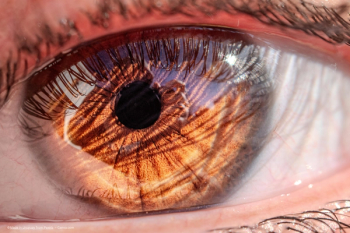
Neuroprotection in glaucoma
Neuroprotection, a strategy to slow or prevent the death of retinal ganglion cells, offers the possibility of slowing the rate of glaucomatous progression and preventing blindness. But although the underlying theory appears to be sound, much still needs to be learned through basic and clinical research before neuroprotection could become an integral part of glaucoma therapy.
The rationale behind this therapy
Neuroprotection has been studied for therapeutic application in various conditions, including Alzheimer's disease and stroke; studying its potential benefit in glaucoma therapy, however, is difficult because disease progression is an extremely slow process and trials would require many years and a large number of patients. Dr Weinreb suggested that the currently used IOP-lowering drugs could be evaluated for neuroprotective ability, which might lessen the time before a neuroprotective strategy could be proven to be safe and effective. He commented that the future of glaucoma therapy unquestionably will continue to include lowering of IOP to prevent optical nerve damage, but it will almost certainly include neuroprotection as well.
Continuing to explain the foundations of neuroprotection, Neeru Gupta, MD, PhD, outlined the connections between the eye and the brain. Numerous mechanisms are implicated in neurodegeneration and one of the most abundant neurotransmitters is glutamate, which can be toxic if present in excess. "If we can block glutamate with a drug such as memantine, we can relieve some of the insult that is being generated," Dr Gupta said.
Memantine hydrochloride, a moderate affinity NMDA-receptor antagonist, has been used in Parkinson's disease for over 20 years and it has also been approved for Alzheimer's disease under the name Namenda (Forest Laboratories). In a study of memantine for glaucoma therapy in a monkey model, the drug was shown to protect neurons from shrinkage.
Tracking success
Beyond the theoretical underpinnings, other speakers explained how neuroprotection could be applied in clinical practices. Ananth Viswanathan, MD, FRCOphth, described measurement of neuroprotection through visual field testing, and David S. Greenfield, MD, explained measurement through imaging of the optic disc and retinal nerve fibre layer.
While waiting for results of studies of neuroprotection and for new technologies for measuring the structure and function of the optic to emerge, clinicians have practical technologies for predicting progression that can be applied now, Dr Viswanathan said.
Progression analysis can either be trend-based or event-based. Event analysis defines a baseline then looks at the end of a series of images, such as visual fields, and compares the two. If there is any difference, progression has occurred.
Newsletter
Get the essential updates shaping the future of pharma manufacturing and compliance—subscribe today to Pharmaceutical Technology and never miss a breakthrough.









































